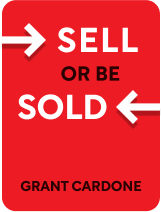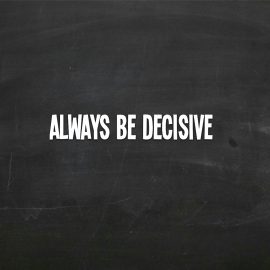

This article is an excerpt from the Shortform book guide to "Sell or Be Sold" by Grant Cardone. Shortform has the world's best summaries and analyses of books you should be reading.
Like this article? Sign up for a free trial here .
How do you overcome the hard sell? What causes a hard sell?
You overcome the hard sell by recalling your initial conviction about a product and by persistently asking for the sale until you convince the customer. A hard sell happens when you start to feel uncomfortable about a sale due to a customer’s objections or your own lack of conviction.
Read more about how to overcome the hard sell.
The Hard Sell
Cardone defines the hard sell as the moment the salesperson’s job becomes hard (not as the moment a salesperson starts putting pressure on a customer). There’s often a point in the close where you’ll become uncomfortable—perhaps the customer starts screaming—and you must be able to endure this discomfort to make the sale. When you come to a difficult objection or feel yourself faltering, use the following strategies to overcome the hard sell:
1. Recall your own conviction about the product. This will give you the drive to hold your position and insist. Additionally, don’t let customers sell you on their conflicting ideas and objections.
- For example, a customer once said he felt Cardone was pressuring him. Cardone responded by explaining that he strongly believed the product would help the customer and asking him not to mistake Cardone’s passion and enthusiasm for pressure.
2. Don’t believe the reasons customers give you for not buying. They’re likely excuses, not actual objections. Remember that the major reason people don’t buy is that they don’t think a product will meet their needs or wants. Prepare responses for common reasons.
- For example, to handle the objection that someone needs to talk to her partner, you might say that if her relationship is anything like yours, she’ll have already discussed it.
3. Ask forward questions. Ask for the information you need to help someone (such as why someone can’t put up the money), even if some people might consider it prying. Listen attentively to the answers and don’t answer the question yourself.
4. Ask for the sale multiple times. Even if you think the customer will say no and reject you, ask her to buy. If she says no, keep asking. Almost no one will buy something without being asked, and most people need to be asked multiple times. (Many salespeople don’t even ask in the first place and this is the top reason why they fail.)
5. Don’t let yelling or emotional outbursts drive you away. These reactions mean that the customer is close to buying. To handle them:
- Stay with her even though it’s painful. Don’t be “polite” and leave.
- Don’t take anything personally. The customer is probably upset about something that doesn’t have anything to do with you, such as her own budget limitations or fear of buying the wrong thing.
- Stay in the present. Don’t think about times someone got emotional and didn’t buy.
- Maintain your calm and rationality.
For example, when saleswoman and fundraiser Charmaigne was fundraising for charity, she asked Cardone for a donation even though he’d already said no. He yelled at her. She responded by smiling and saying that the only reason he was being emotional was that he felt he hadn’t done enough. He donated more.
6. Visualize the desired outcome. Overcoming the hard sell starts in your mind. See the customer handing over their money or owning the product.
7. After navigating the hard sell, write down the objections and details about the interaction so you can use what you learned the next time you close.

———End of Preview———
Like what you just read? Read the rest of the world's best book summary and analysis of Grant Cardone's "Sell or Be Sold" at Shortform .
Here's what you'll find in our full Sell or Be Sold summary :
- How your happiness and even survival depend on your selling ability
- The five steps to becoming a master salesperson
- Step-by-plans to lead the customer to make a purchase






